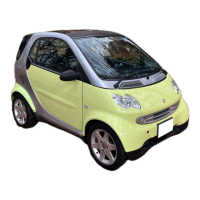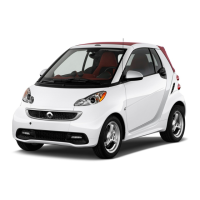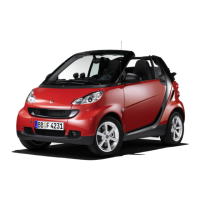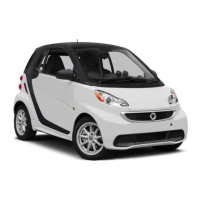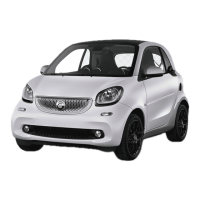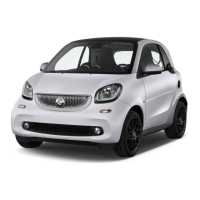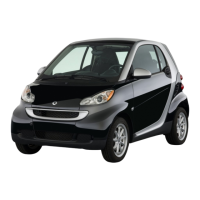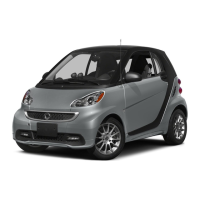not covered by the smart Limited
Warranty.
Tire speed rating
Regardless of the tire speed rating, local
speed limits should be obeyed. Use prudent
driving speeds appropriate to prevailing
conditions.
G
WARNING
Even when permitted by law, never operate
a vehicle at speeds greater than the
maximum speed rating of the tires.
Exceeding the maximum speed for which
tires are rated can lead to sudden tire
failure, causing loss of vehicle control and
possibly resulting in an accident and/or
personal injury and possible death, for you
and for others.
Make sure your tires have the required tire
speed rating as specified for your vehicle
in the “Technical data section”
(Y page 210), for example when purchasing
new tires.
For information on how to identify the tire
speed rating on a tire’s sidewall, see “Tire
size designation, load and speed rating”
(Y page 134).
If you are uncertain about the correct
reading of the information given on a
tire’s sidewall, any authorized electric
drive smart center will be glad to assist
you.
i
For information on speed ratings for
winter tires, see “All-seasonand winter
tires” (Y page 135).
Winter driving instructions
The most important rule for slippery or icy
roads is to drive sensibly and to avoid
abrupt acceleration, braking and steering
maneuvers.
For information on driving with snow
chains*, see “Snow chains*” (Y page 140).
Road salts and chemicals can adversely
affect braking efficiency. Increased pedal
force may becomenecessary to produce the
normal braking effect.
Depressing the brake pedal periodically
when traveling at length on salt-strewn
roads can bring road-salt-impaired
braking efficiency back to normal.
If the vehicle is parked after being driven
on salt-treated roads, the braking
efficiency should be tested as soon as
possible after driving is resumed.
G
WARNING
Make sure not to endanger any other road
users when carrying out these braking
maneuvers.
G
WARNING
The outside temperature display is not
designed to serve as an ice-warning device
and is therefore unsuitable for that
purpose. Indicated temperatures just
above the freezing point do not guarantee
that the road surface is free of ice.
For more information, see “Winter driving”
(Y page 140).
Standing water
Do not drive through flooded areas or water
of unknown depth. Before driving through
water, determine its depth. Never
accelerate before driving into water.
If you must drive through standing water,
drive slowly to prevent water from entering
R
the front compartment
R
the engine compartment
R
the passenger compartment
Driving instructions
145
>> Operation.
* optional
Z
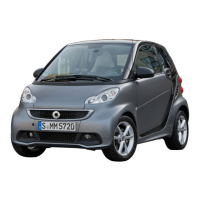
